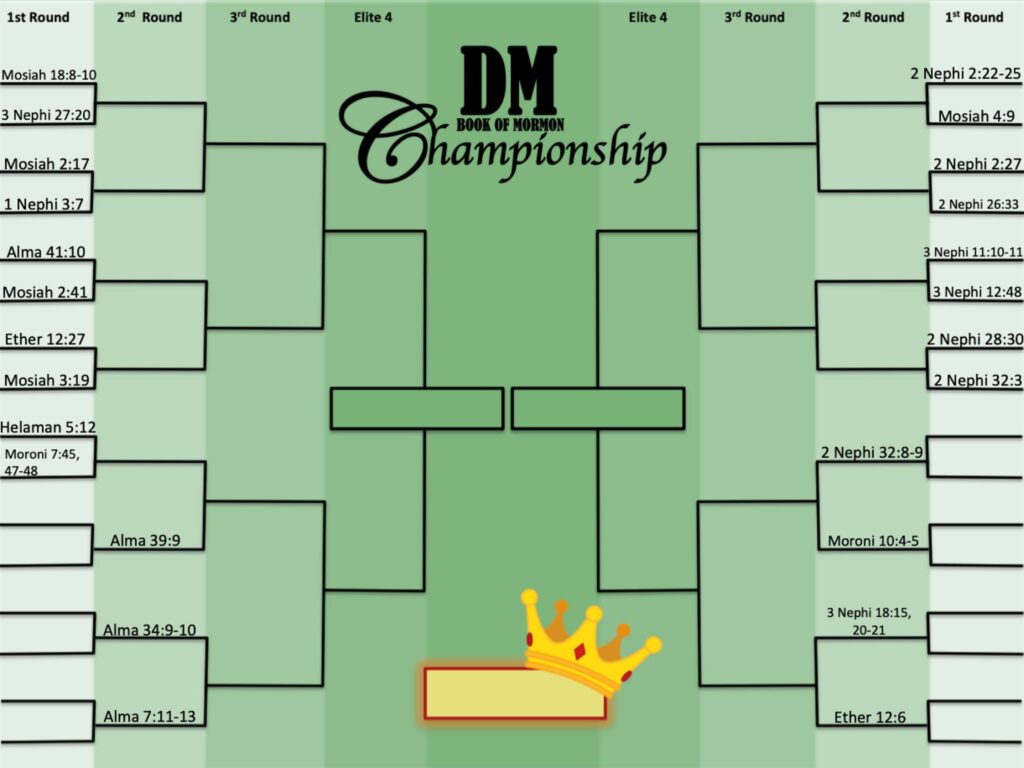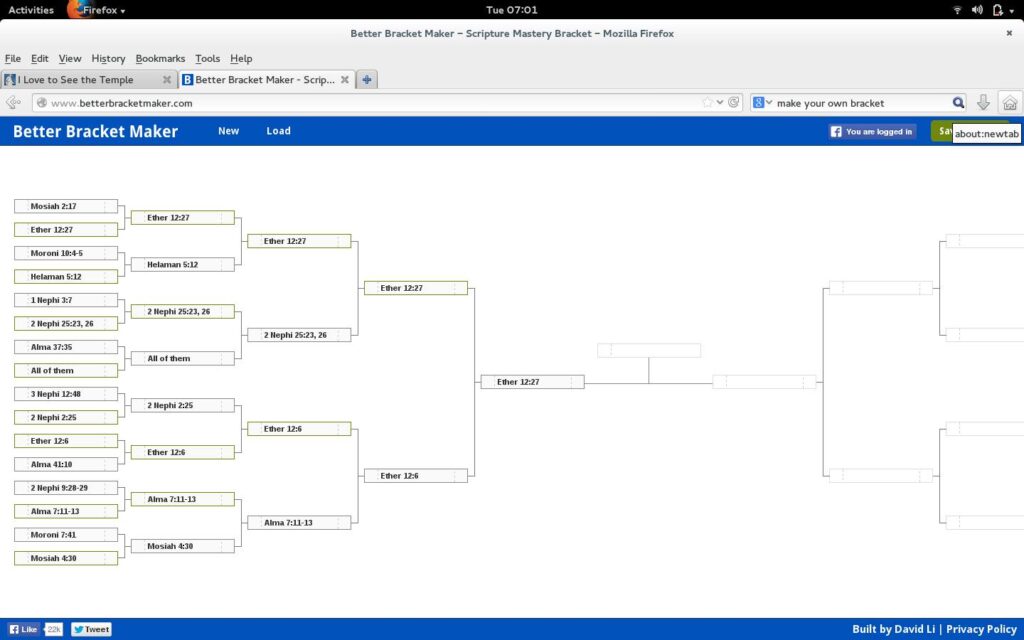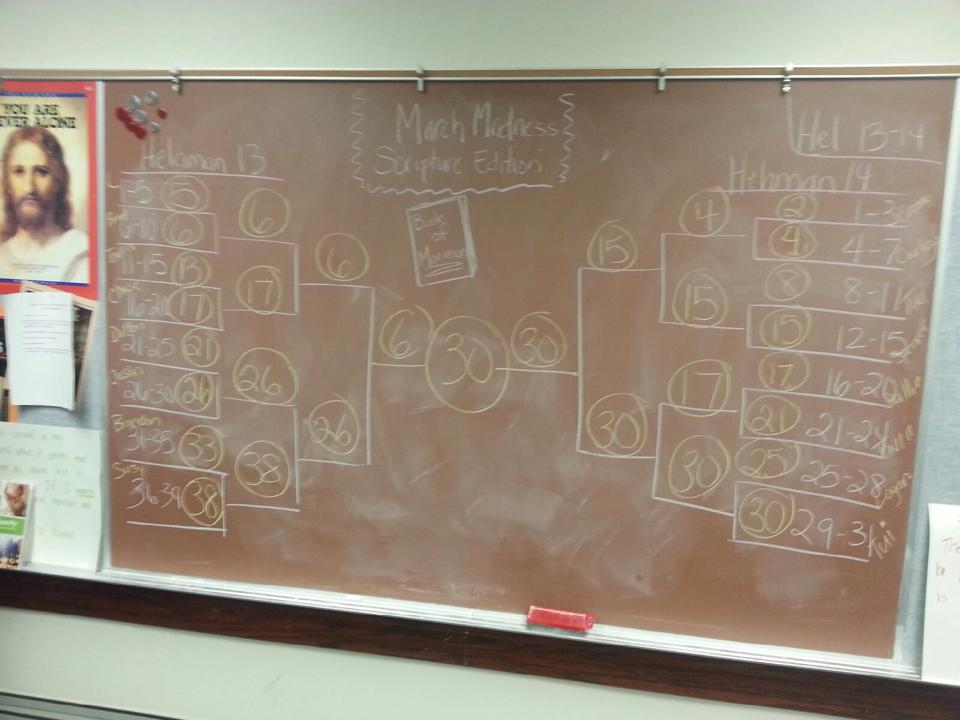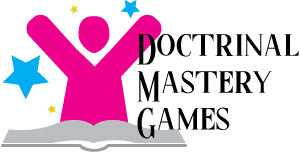From Jenny S - DO YOU WANT TO HELP YOUR STUDENTS RETAIN DOCTRINAL MASTERY PASSAGES?
If you're looking for ways to help Seminary students retain Doctrinal Mastery passages, you can use brain science plus a little bit of basketball to get better results. It's March Madness Doctrinal Mastery brackets! It's not fluff -- it's science! Read on to find out how it works.
For those of you unfamiliar with March Madness, here’s a brief explanation. You make a bracket that contains all or most of the doctrinal mastery passages for the year. Students are able to choose or are assigned passages to match against each other. Students describe the meaning of their assigned passage(s) and explain why it is important. Classmates vote on the scripture and the “winner” move up on the bracket. It is most commonly used for doctrinal mastery, however, it can be used as a teaching technique for other passages as well. These scripture brackets always seem to be fun activities that engage students in ways you may find surprising.
But the DM bracket is more than just a fluff activity! It’s a teaching method that uses brain science to help your students remember more of the principles taught in the DM passages. According to the book Brain Rules by John Medina, the key is that brains remember things that are more elaborate -- things that have personal meaning. Many studies have shown that students remember more when they learn meaning versus memorizing by rote. People who think about meaning remember two to three times as much as others who do not. “At this point, you might be saying to yourself, ‘Well, duh!’ Isn’t it obvious that the more meaning something has, the more memorable it becomes? … The trick … for educators, is to present information so compellingly that the audience provides this meaning on their own, spontaneously engaging in deep and elaborate encoding.” (Medina, 136)
For maximum results with the bracket, you will want to block out time over a few days. Perhaps you have playoff, quarterfinal, semifinal, and final matches scheduled over 3-4 days. The reason for spreading this out is, again, brain science. Spaced repetition is key for remembering. Ideally, you’d have some sort of recap, and then begin the next bracket of scriptures.
Another way to maximize results using brain science would be to have students do role-plays where they might use this passage in real life and then vote on Most Likely to Use. We know that similarities between present and past events help us connect memories. If you can create a situation in the classroom that may happen in real life, students can more readily recall the passage, because they’ve already ”lived” it through role-play in your classroom.
I hope you’re taking advantage of the March Madness season to really dig in on your doctrinal mastery, especially if you are a teacher who doesn’t normally use games or other types of activities in your classroom. A DM bracket isn’t mere fluff -- it’s science you can use to teach the gospel.
More information on Doctrinal Mastery Brackets

Q - To make sure I’m understanding this right. Assign each student a DM scripture, make bracket. Two at a time they present their scripture “compete against each other” and the class votes who advances until finally a winner is decided?
By Heidi M: A - exactly correct!
Q - How do you do the voting? Raise of hands? Anonymously? If they win and present again, do they present the same thing?
In my class we vote between the 2, yep... and the person/ scripture that wins presents that same scripture again... our rule is they have to present it in an all new way the next time they're up. It's great for repetition and memorizing the doctrinal mastery scriptures. We vote by raising hands.

Jenny S - [description of BoM bracket] Did our bracket today -- and the winner was ................ Ether 12:27!
We only did 16 SM passages because we got started late due to the supposed snow (which didn't come). But this was a fun activity. I had kids nominate scriptures, but I decided not to make them defend their own scripture so that it wasn't like "mine lost". Instead we just read them aloud and discussed. The last two brackets went fast, but the first took some time. I used the website http://www.betterbracketmaker.com/ [site no longer works] to make the bracket and post it on the television [through my laptop]. Worked great and was lots of fun, PLUS it really got this kids thinking about what the SM passages were about and talking important doctrines. Thanks for this great idea!
Q - So was this done all in one class? I like that you made it so "their scripture" didn't lose.
A - Yes, we did it all during one class, [it took] about 35 minutes. First I had students read each passage aloud. Discussion. I called for a vote. After the first bracket, we didn't read the scriptures--just used the bookmarks or summarized. Brief discussion. Vote. By the final vote I had them vote silently bc they were getting into it. ![]() You could limit the discussion to a few seconds per scripture with a timer if you wanted, but some scriptures were rejected out of hand like "Be ye therefore perfect" got 0 votes because "it doesn't tell you how to be perfect," so that was a fast one.
You could limit the discussion to a few seconds per scripture with a timer if you wanted, but some scriptures were rejected out of hand like "Be ye therefore perfect" got 0 votes because "it doesn't tell you how to be perfect," so that was a fast one.

Note: You can get the book Brain Rules mentioned above at Amazon.
More: Here's a description of March Madness Brackets from Never Bored Whispers.
Lots More: Seminary Teacher FB Group Brackets
Print your own brackets: https://www.printyourbrackets.com/








